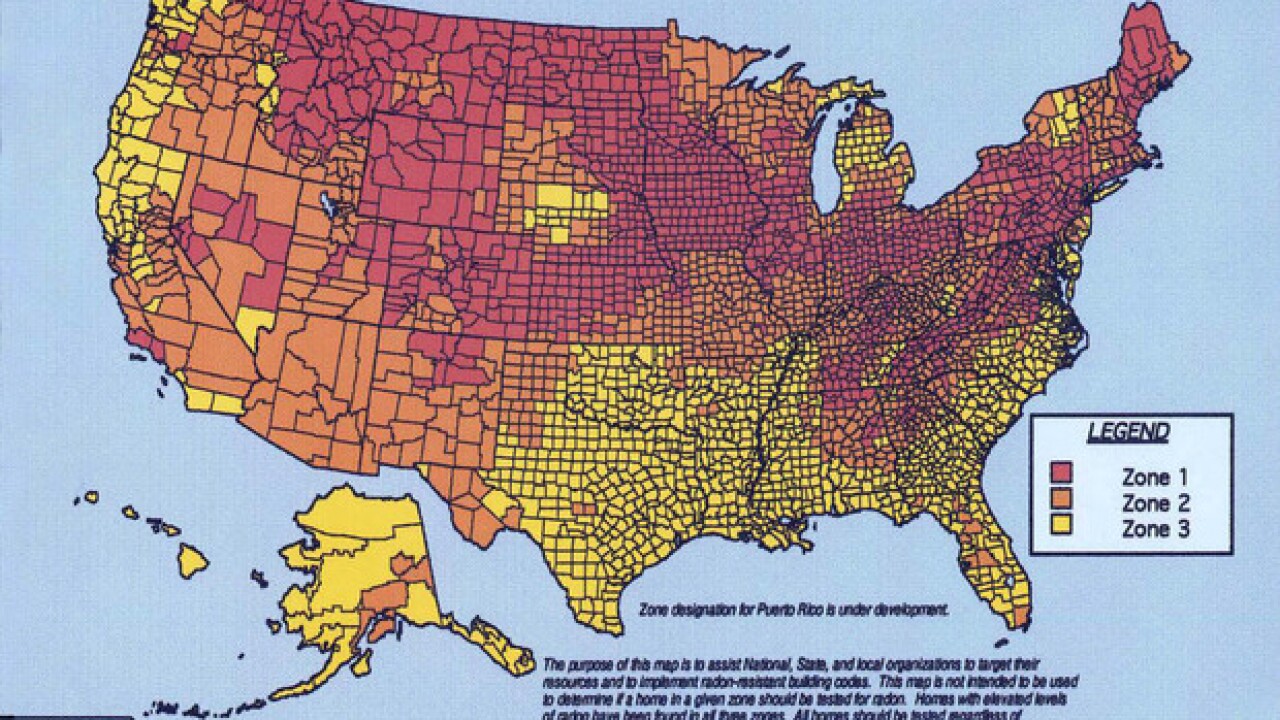What is radon?
Radon is a byproduct of uranium a naturally radioactive element breaking down in the soil. It has no color, smell, or taste. Read more about radon on the U.S. Environmental Protection Agency website.
Why is it so bad in Nebraska?
Nebraska has the third-highest radon levels compared to other states; only Iowa and Pennsylvania have more. It's caused by a rock layer under the surface — and in Nebraska, it's closer to the surface than it is in other areas.
Here's some maps by county showing how bad the numbers are:
Why should I care now?
Levels differ, depending on the time of year.
TABLE: CHECK RADON REPORTS BY NEBRASKA ZIP CODE
In Omaha and Lincoln, there's currently a real-estate frenzy, and because of low inventory, multiple bid situations are common for buyers. When that happens, buyers often forgo items like a home warranty or radon test to make their offer more appealing to the seller.
How can I test for radon?
While you may be able to find testing kits in the store, the Department of Health and Human Services recommends buying from one of these two websites:
According to DHHS, a test purchased from these sites are the most accurate and have the best price.
What's a bad, or high, radon number?
Radon is measured in picocuries per liter or pCi/L. (A picocurie is one-trillionth of a curie, or "the quantity or mass of radium emanation in equilibrium with one gram of radium".) The EPA says anything above a 4 pCi/Ls is dangerous. It's the equivalent of smoking 10 cigarettes a day, or the radiation of 100 chest X-Rays in one sitting.
Does it matter whether my house is older or newer?
It does not matter whether it's a new house, an add-on, an older home, etc. Radon enters your house through the foundation, but it can take a variety of paths:
- Cracks in basement floors
- Drains
- Sump pumps
- Exposed soil
- Construction joints (mortar, floor-wall)
- Loose-fitting pipes
How do I fix it?
Currently, there are about a dozen radon mitigation companies in the Omaha area. They go through special training and certification. A mitigation system is a vent pipe system and fan, which pulls radon from beneath the house and vents it to the outside. It usually costs between $800 and $1,500 to install and will take less than a day for a company to install.
Where can I find more information about radon?
- A Citizen's Guide to Radon
- Home Buyer's and Seller's Guide to Radon
- Consumer's Guide to Radon Reduction: How to Fix Your Home
- More publications from the EPA
- EPA.gov/radon
- radon.com
—
SOURCES:
Mark Versch, evironmental health analyst, DHHS
Andrea Lane, Omaha real estate agent
Kim Buchmeir, radon awareness advocate who contracted lung cancer from radon in her home
Troy Pell, Platinum Radon Solutions


